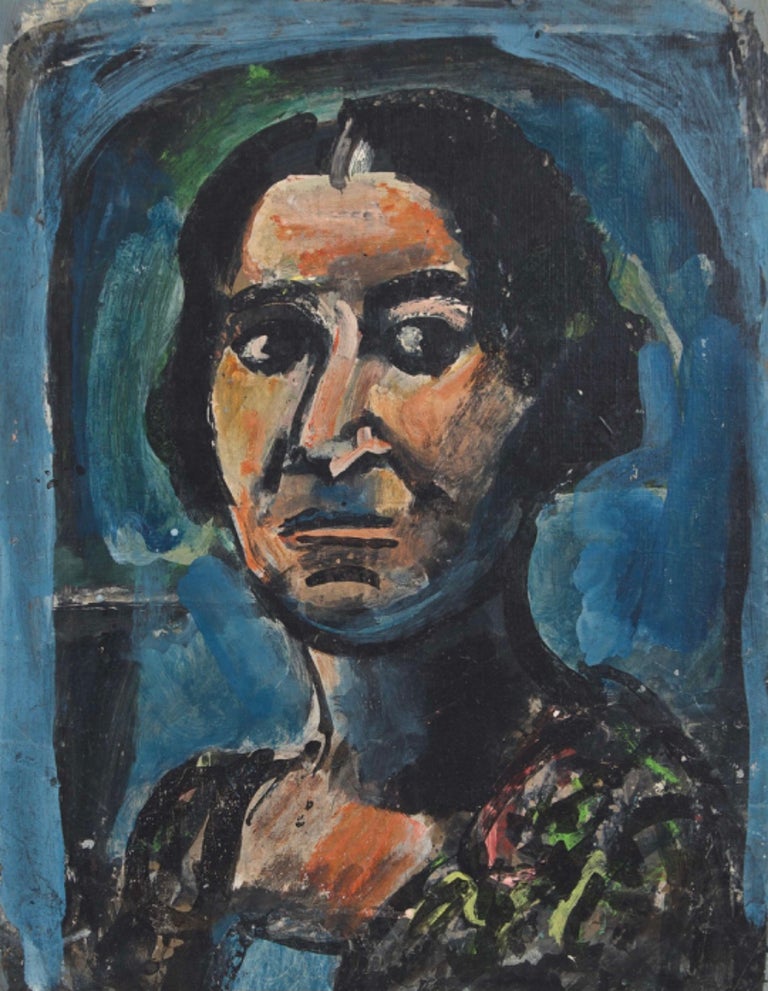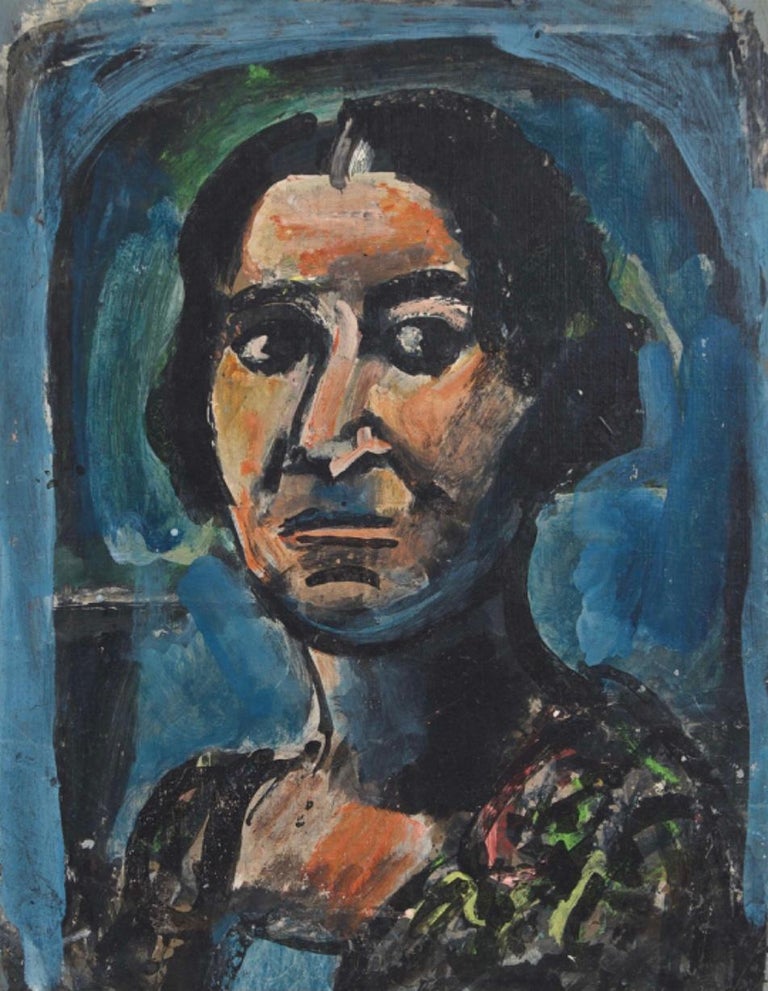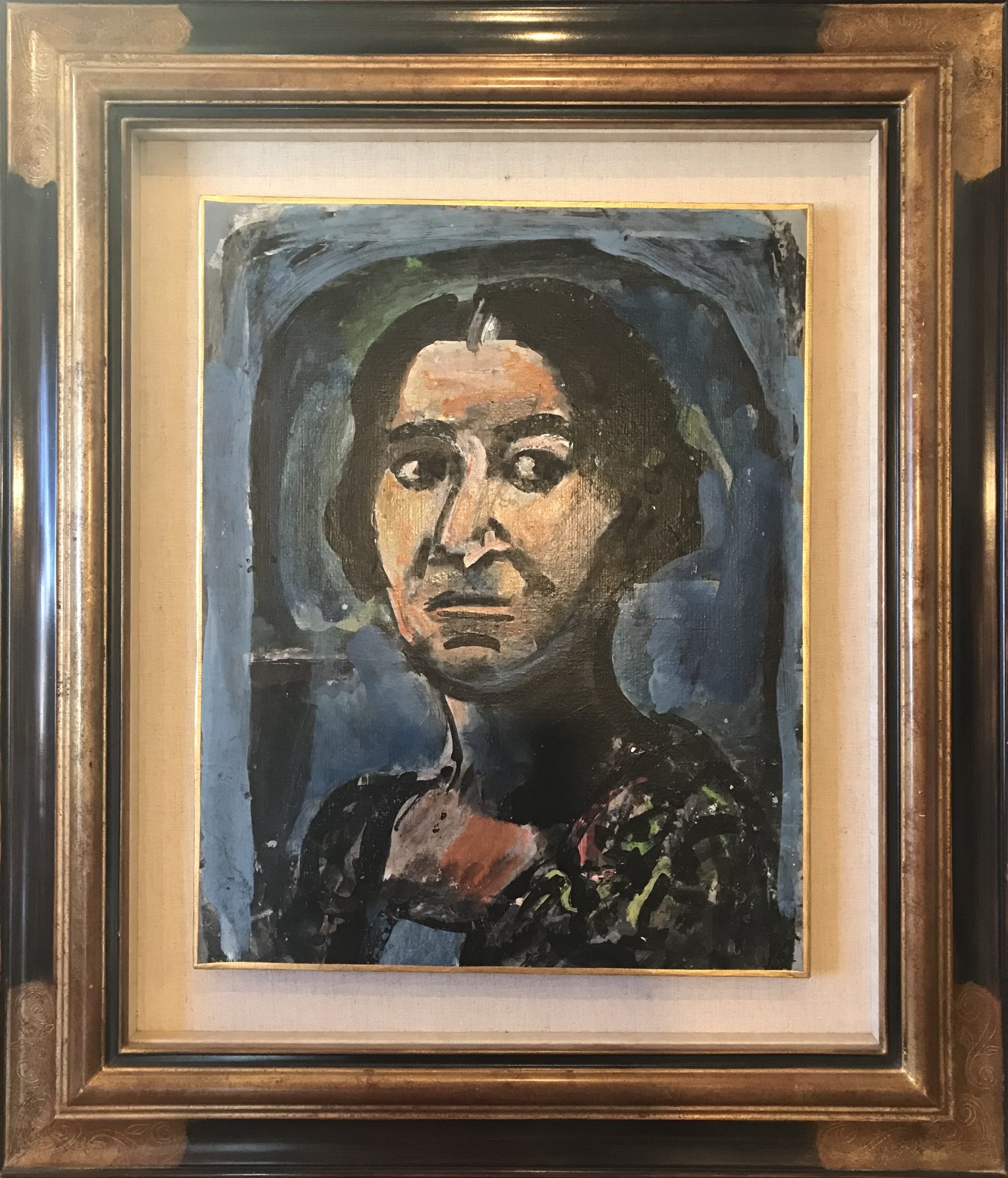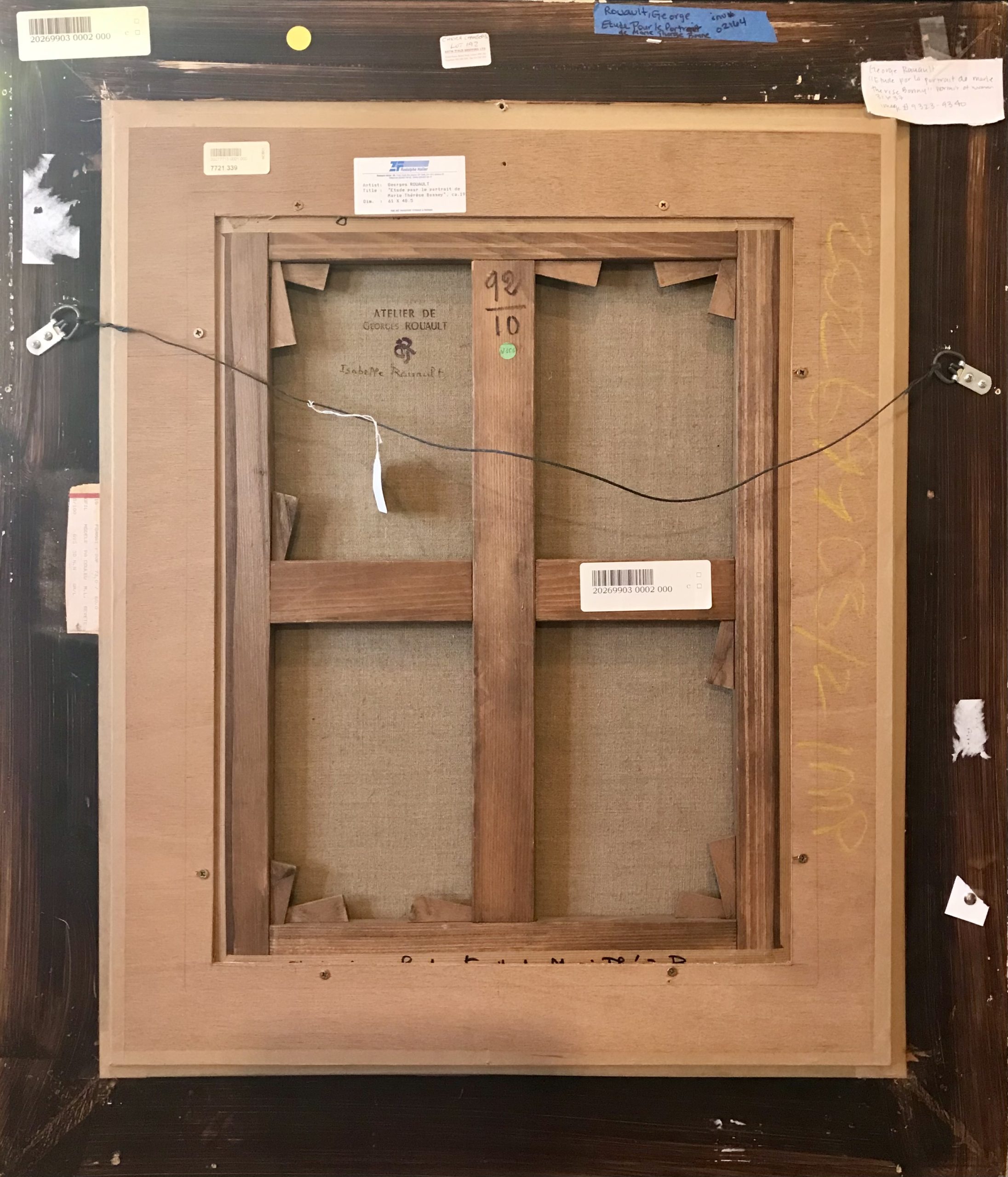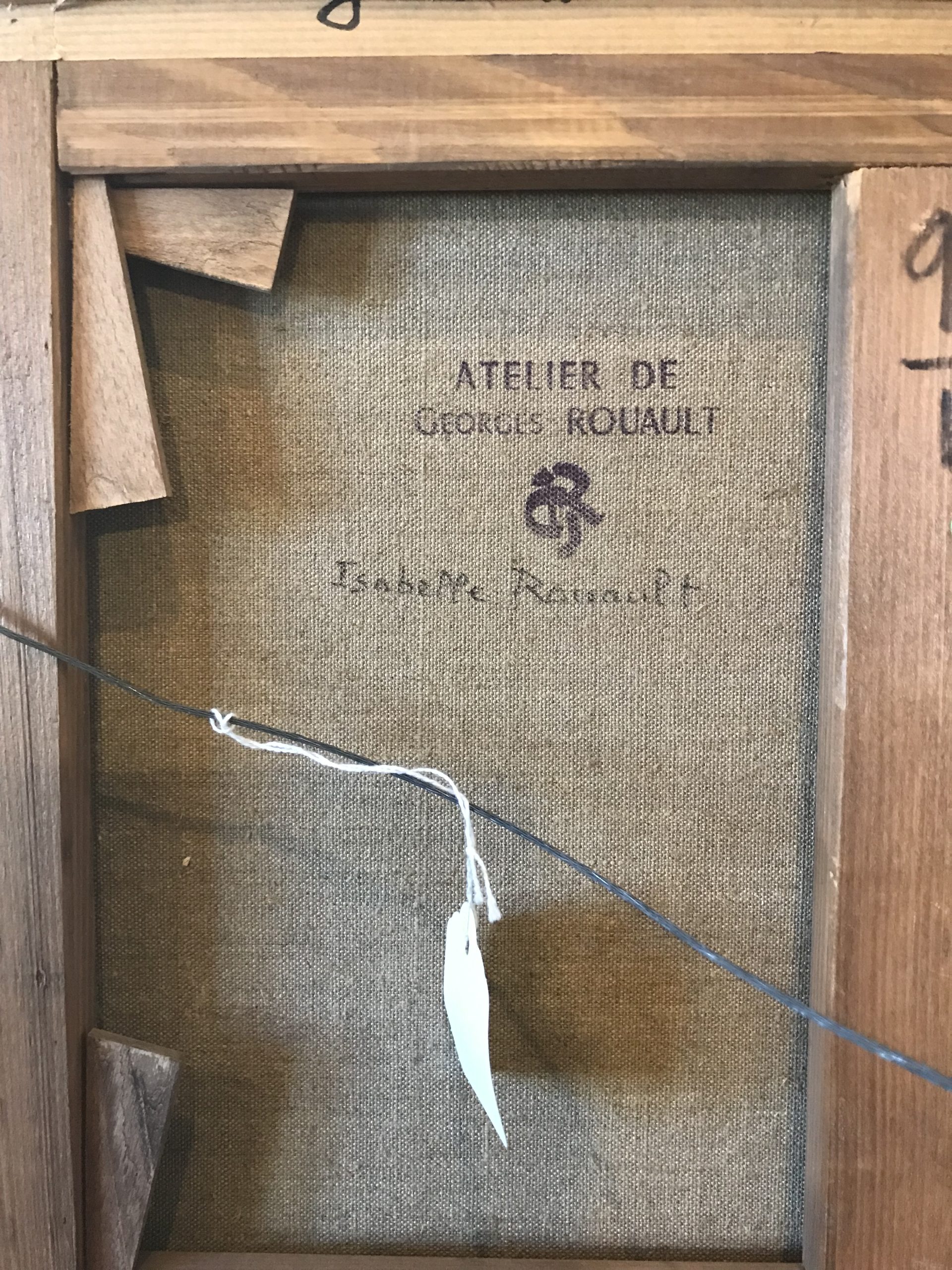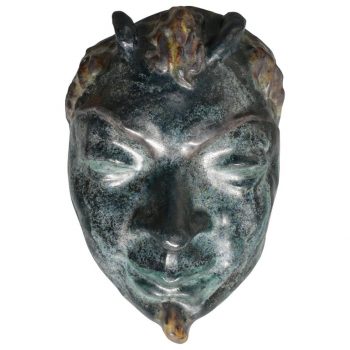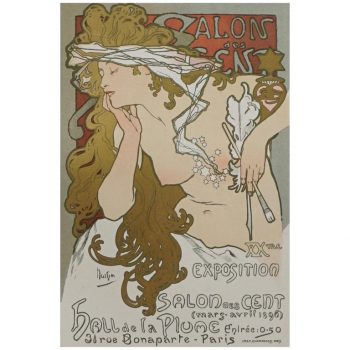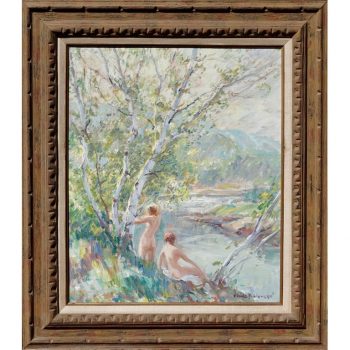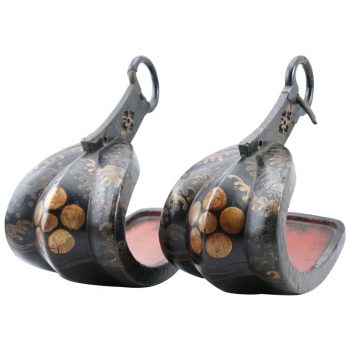Description
Georges Rouault (French, 1871-1958) – Étude pour le Portrait de Marie Thérèse Bonney
Stamped with ‘Atelier de Georges Rouault’ and signed by Isabelle Rouault verso, oil with brush and ink on paper laid down to canvas
Canvas: 24 x 19 1/8 in. (61 x 48.6cm)
Framed: 36.5 x 31 Inches
Executed circa 1933.
Provenance
Christie’s, New York, sale of November 9, 1999, lot 361.
Acquired directly from the above sale.
Private Collection.
Sotheby’s, New York, sale of November 8, 2001, lot 339.
Acquired directly from the above sale.
Collection of Sidney Rothberg, Philadelphia, Pennsylvania.
Literature
Bernard Dorival and Isabelle Rouault, Rouault, L’Œuvre Peint, André Sauret, Monaco, 1988, Vol. II, p. 297, no. 2554 (illustrated).
Though he joins the ranks of the major artists linked to the heroic avant-garde years in Paris, Rouault cut something of a solitary figure amongst his peers. He nevertheless formed early career associations and friendships with Henri Matisse, Albert Marquet, Henri Manquin and Charles Camoin and this brought him into the fold of the Fauvists with whom he exhibited at their famous 1905 exhibition at the Salon d’Automne. However, his work carried strong elements of Expressionism, which had never found much favor outside of Scandinavia and Germany. By the beginning of the First World War Rouault was turning more and more away from watercolor and oil on paper towards oil and canvas and he applied his paint through thick, rich, layers which helped amplify his raw and bold forms. His colors, awash with deep blues, contained within heavy black lines, produced art that was reminiscent of stained glass windows and supported subject matter that became more overtly religious with a strong recurring theme of the power of redemption. The majority of his career was devoted to the human figure – specifically clowns, prostitutes and Christ – but during the last decade of his life his palette allowed for pastel shades of green and yellow to impinge on canvases that placed his figures in charming mystical landscapes.
Unique amongst modernists, Rouault’s artistic evolution was informed by a devout Catholic faith. Drawing on the ideas of religiously-inspired intellectuals of his time, Rouault looked towards symbolism and primary colors to express the core values of Catholicism; a highly unfashionable (and single-minded) worldview when one considers the progressive milieu in which he was working.
As was the norm amongst modernists who wanted to represent the lives of “ordinary” workers, Rouault’s prostitute paintings treated his sitters with a genuine, non-judgemental, empathy. Rouault represented his workers with an honest, unadorned, realism that allowed for (or, in his view, insisted upon) an emphasis on naked sensuality. He was thus able to eclipse the aims of his peers by the way he drew attention to the contradictions at play between his models’ Rubenesque seductiveness and their societal exploitation.
In an age of science and reason; and age in which faith was considered the philosophical property of only innocent minds, Rouault treated the figure of Jesus, not with irony, nor even distain, but rather as the true saviour of all mankind. His masterpiece is considered to be a book of 58 collated illustrations. Revealing the strong influence of German Expressionist woodcuts, Miserere (1922-1927) lays bare the stark spectacle of everyday human suffering with the figure of Christ presented in these pages as the redeemer of all the wretched souls.
Towards the end of his career, Rouault produced a series of “biblical landscapes” (landscapes populated with religious figures). Unlike the earlier works of artists like Henri Matisse who explored the expressionist landscape via the “joie de vivre” of reveling freely in the physical sensation and direct experiences of nature, Rouault combined his flattened symbolic landscapes with classical influences thereby imbuing them with a spiritual aura that was wanting in the work of his contemporaries.
AVANTIQUES is dedicated to providing an exclusive curated collection of Fine Arts, Paintings, Bronzes, Asian treasures, Art Glass and Antiques. Our inventory represents time-tested investment quality items with everlasting decorative beauty. We look forward to your business and appreciate any reasonable offers. All of our curated items are vetted and guaranteed authentic and as described. Avantiques only deals in original antiques and never reproductions. We stand behind our treasures with a full money back return policy if the items are not as described.
Please also consider Avantique’s eclectic collection of wonderful fine art paintings with artists such as Henri Matisse, Paul Gauguin, Gustavo Klimt, Georges Braque, Anthony Thieme, Emile Albert Gruppe, Alphonse Mucha, Maximilien Luce, Alfred De Breanski, Antoine Blanchard, and Marcel Dyf. We strive to collect the highest-quality paintings in exceptional condition.


